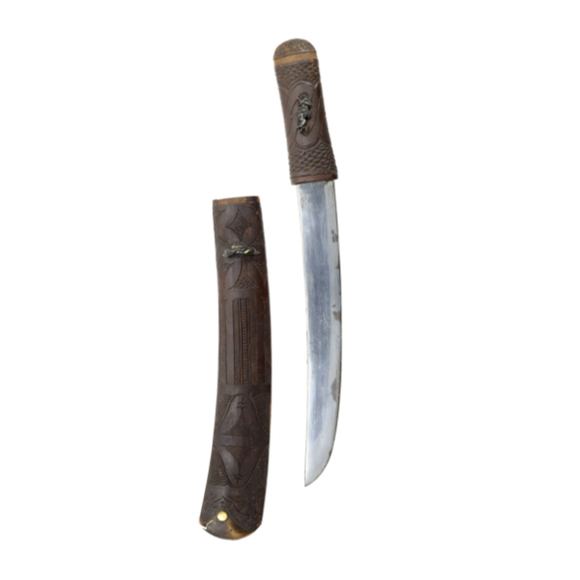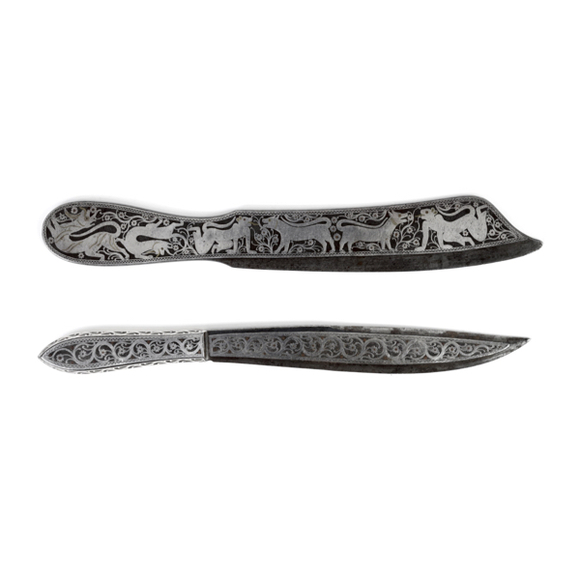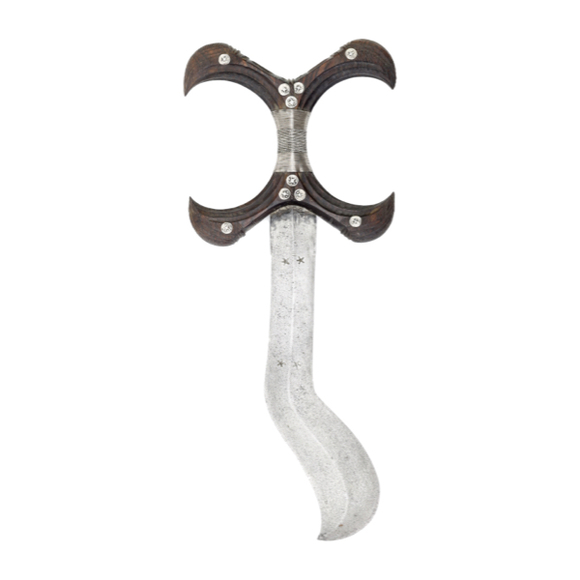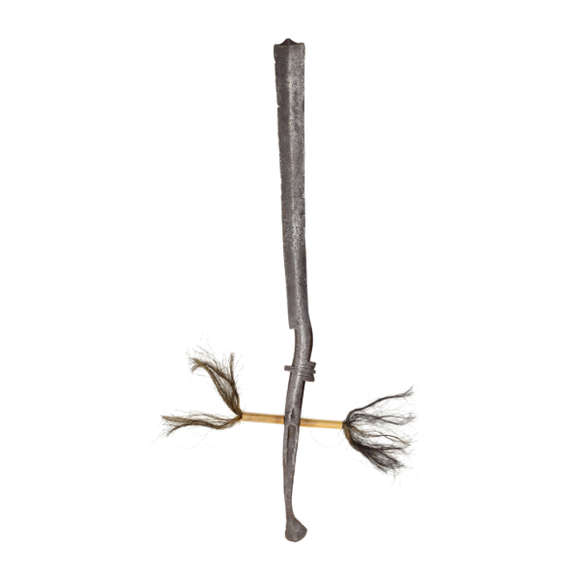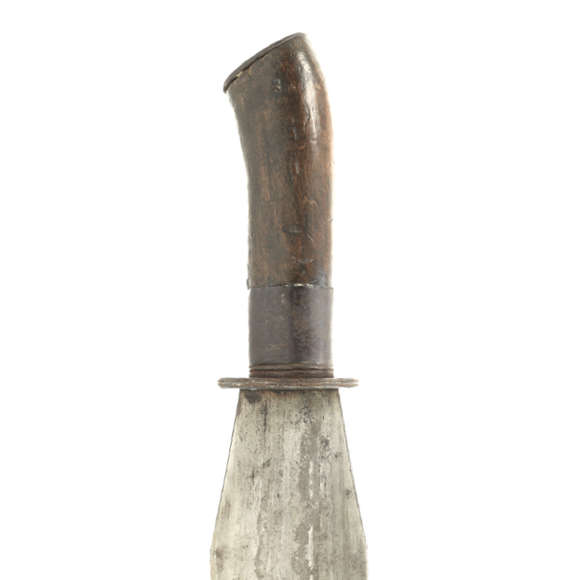Language: Ainu
Source: John Batchelor; An Ainu-English-Japanese dictionary. 1905.
Description
Ibehe is the Ainu word for a knife or sword blade. The literal definition given by Batchelor is:
"Food. Fruit. Bulbs. The meaning of a word. Essence. A sword or knife-blade. Strength." 1
The Ainu were not the only ones to liken their blades with fruits, the Hindi word phal (फल) for example also literally means "fruit" but was also used to describe the business end of weapons: arrowheads, spearheads, and sword blades. Its probably an analogy that is made from the fact that the fruit is the useful part of the tree (for us), and the blade is the useful part of the weapon.
The blade of their makiri utility knives is referred to as makiri-ibe.
Notes
1. John Batchelor; An Ainu-English-Japanese dictionary (including a grammar of the Ainu language). Tokyo Methodist Publishing House, 1905.
2. Glossary article for phal (फल).
Blade production
There is some unclarity about who made Ainu blades. The Ainu initially had their own iron and steel production facilities but a 1669-1672 revolt of the Ainu against the Matsumae clan of Hokkaido resulted in a ban on iron production and possession.1
Later sources suggest they mainly imported them, but others mention the skilful enriching of iron tools into steel by Ainu and re-working them into new product.
"...although it was strictly forbidden by the Matsumae to give iron material to the Ezo [Ainu], many iron products, including carpenters tools, had been passing to the Ezo [Ainu] for a long time. Such products were always of low quality but when the Ezo [Ainu] received them they transformed them into ones of higher quality." 2
-Furukawa Koshöken, 1788
Notes
1. Yuriko Fukasawa; Ainu archaeology as ethnohistory; Iron technology among the Saru Ainu of Hokkaido in the 17th century. Pages 48-49.
2. Translation by Yuriko Fukasawa. Ibid.
Examples
Blades of Ainu makiri knives are typically curved, pointy, and with a single bevel on the right side.
Blades of larger fighting daggers and swords tend to have a symmetrical cross-section. They resemble Japanese swords somewhat but are usually without the ridges, and always made to be used without the habaki (collar piece) that is so typical on Japanese swords.
Their forging structure resembles mainland Asian work more than Japanese, in that there is often an inserted high-carbon steel edge while Japanese blades tend to have a high carbon steel outer jacket.
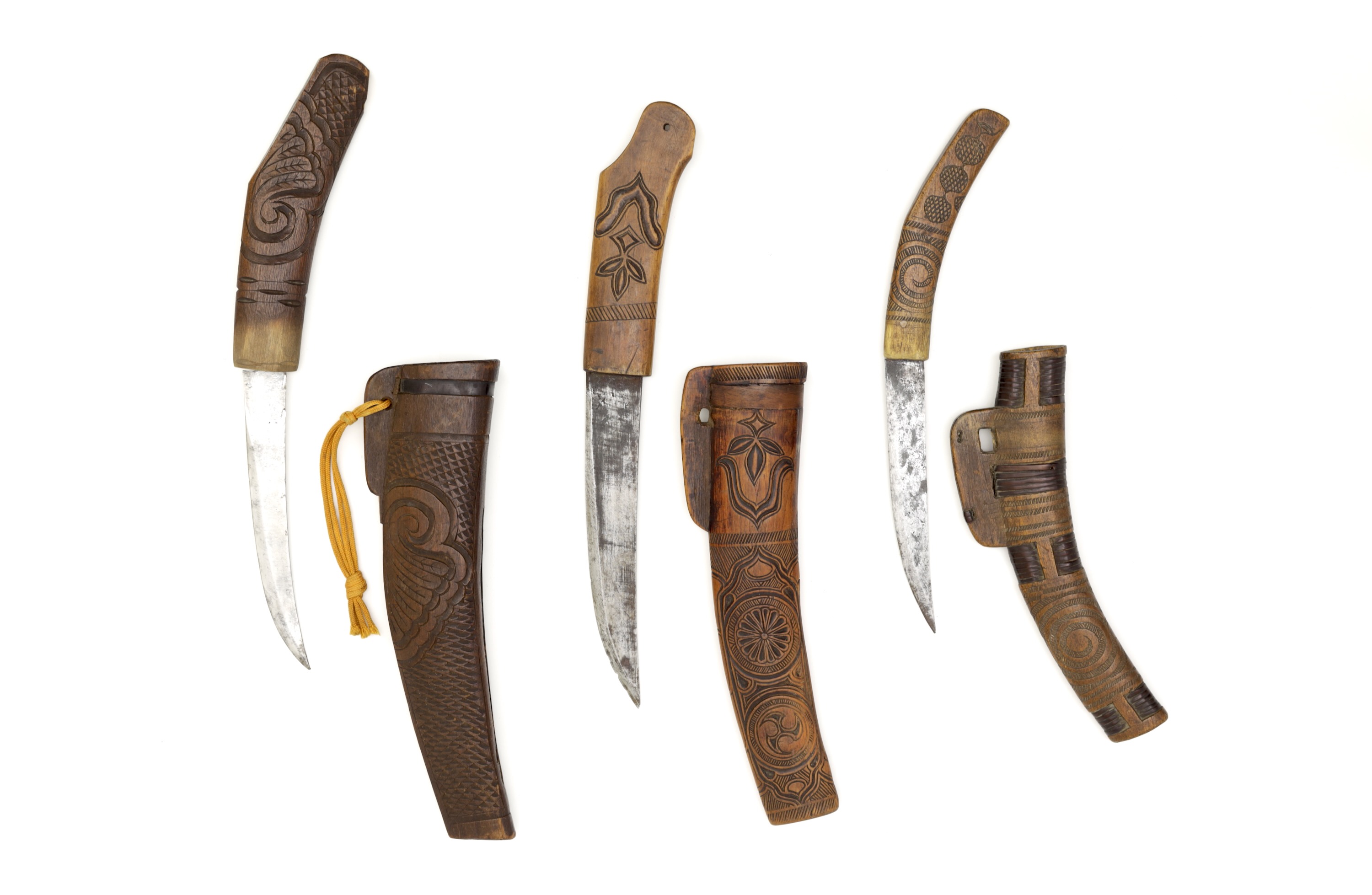
Makiri knifes.
Sold by Mandarin Mansion in 2022.

Ainu sword blade. Probably from before the 17th century ban.

An Ainu chief's dagger, modeled after the Japanese tantō.
Glossary of terms
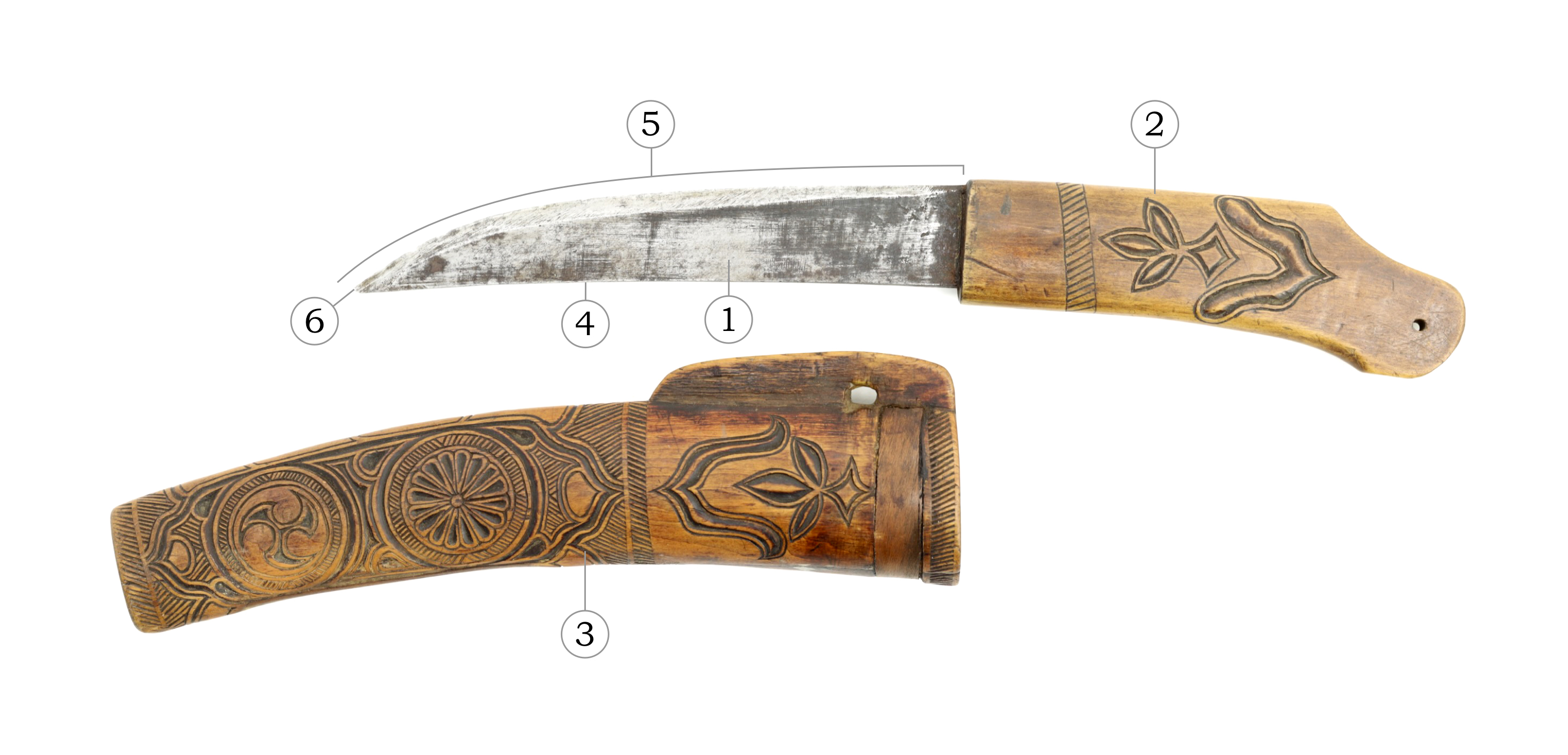
|
# |
English |
Ainu |
|
| 1 | Knife blade | makiri-ibe / ibehe | |
| 2 | Knife handle | makiri-nip | |
| 3 | Knife sheath | makiri-saya | |
| 4 | Back of knife | mekkashike | |
| 5 | Edge | notak | |
| 6 | Point of knife | kanetuhu / etuhu | |
Further reading
Article: Knives and swords of the Ainu


